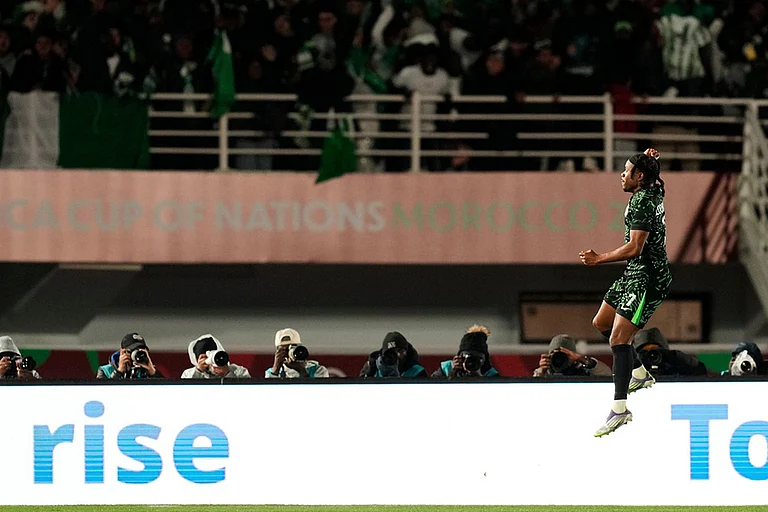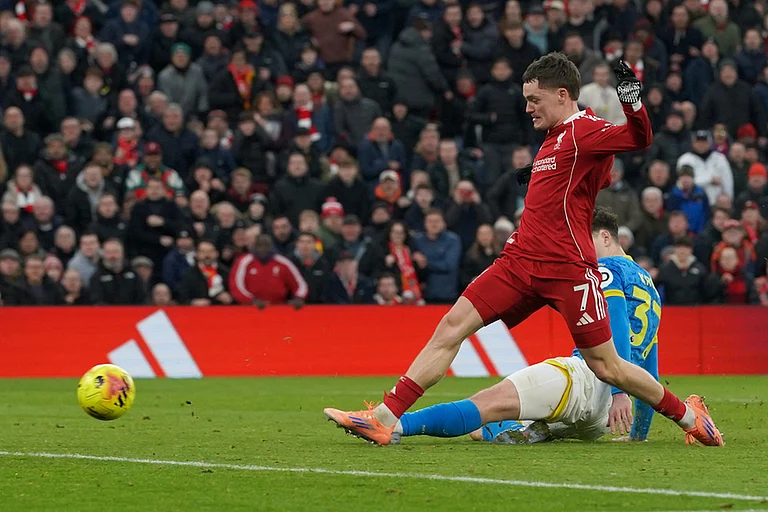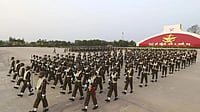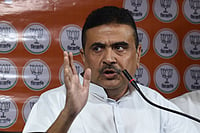According to the Controller General of Accounts, in the first four months (April-July) of this fiscal, the revenue deficit, or the excess of the government’s day-to-day expenses over its revenue income, touched Rs 58,076 crore, or 76 per cent of the target of Rs 76,171 crore (see chart)! As for the fiscal deficit, or the government’s total new debt, it is comparatively better leashed at Rs 50,398 crore, or 37 per cent of the full year’s target. Thanks mainly to the state debt swap scheme (replacing old high-cost debt with cheap ones). But, incidentally, the primary deficit (fiscal deficit less interest payments) has more than tripled to Rs 13,780 crore!
Says economist Omkar Goswami, head of research consultancy firm cerg Advisory, "This fiscal is going to be Chidambaram’s most challenging so far. It will be a Herculean feat to achieve those lovely targets that he set. I expect the revenue deficit to touch four per cent and fiscal deficit five per cent this year." Agrees Anushree Sinha, principal economist, ncaer: "There is a decelerating trend and a distinct slippage on the revenue front. And it doesn’t look like the gap can be made up in the rest of the year."
The slow pick-up in revenues over rising expenditure has left even NIPFP chairman and taxation expert M. Govinda Rao worried. "Of course, the action regarding the revenues held up in disputes is yet to be taken and on this front the ministry may make some progress. Even so, it is unlikely that the targets will be met," he concludes.What does the government have to say on this? Beyond the statement made in Parliament in keeping with the Fiscal Responsibility and Budget Management (FRBM) Act, which admitted that the revenue situation was "a cause for concern", precisely nothing. Finance secretary D.C. Gupta passes the parcel to revenue secretary Vineeta Rai, who is not only "unwell" but also "not prepared to speak on this matter".
But statistics, in this case, reveal more than they hide. The "buoyancy and the historical trends" that FM Chidambaram expected are yet to make their presence felt. The obvious culprit behind the zooming revenue deficit is the paltry 15 per cent growth in net tax revenue in four months, against a 28 per cent rise in non-plan expenditure due mainly to drought-related revenue expenditure, high interest payments and pension outgo.
Why are tax inflows so little? The budget itself had been kind to many industries (textiles being an obvious example). The 2 per cent education cess and the securities transaction tax can be implemented only after the Finance Bill is passed, so expect a rush of money in the second half of the year. But, as Sinha points out, don’t forget the later backtracks and the giveaways. The transaction tax, effective on bourses from October 1, was proposed at 0.15 per cent but later staggered to include two more levels of 0.015 per cent and 0.01 per cent.
This rollback cost the budget Rs 5,000 crore. Inflation-oriented reliefs like excise and customs duty cut on petro goods cost Rs 2,500 crore and steel customs duty cut lopped Rs 375 crore. Some random IT and aircraft leasing tax reliefs granted when Finance Bill 2004 was passed took away another Rs 700 crore. Leaving a total gap of around Rs 9,000 crore. And now the Foreign Trade Policy announced by commerce minister Kamal Nath could lead to a revenue loss of another Rs 5,000 crore, officials fear.
The other factor crucial to Chidambaram’s tax ambitions was recovery of tax arrears, especially the high-demand cases. Some Rs 83,000 crore worth are pending, but the amount that can be collected is only Rs 23,700 crore. Out of this, Rs 15,000 crore has been targeted to materialise this fiscal. Some Rs 1,092 crore, or 7 per cent, was recovered in the first quarter. The progress is clearly negligible, although the Central Board of Direct Taxes (CBDT) has set a deadline of December 31 for disposal of all cases where demand exceeds Rs 1 crore.
September is probably too early to lose hope on the taxes front, but economists and analysts do feel that by fixing ambitious targets, North Block may have bitten off more than it can conceivably chew. The major problem, of course, is the wild targets. Both Goswami and Rao feel that expecting corporate tax collection to rise, just in the space of 12 months, by 40 per cent, IT by 26 per cent and services tax by a whopping 70 per cent is less practical maths, more rocket science.
Then there are the logistical and infrastructural problems. Sinha points out, and rightly too, that tax collection through a widening of the net, that is, by picking first-timers, is a job that has to be done on the ground and will therefore be time-consuming. Secondly, while industrial growth is still nicely on track, the intermittent rains are sure to hit agricultural demand to some extent. Industry also needs to protect the returns on its capital, a job made increasingly difficult by the rising inflation.
Prices is the third worry. Not only did the government fail to factor in a reasonable oil price rise, the global market trends, made more uncertain by the absence of a firm recovery in the US, have put growth prospects under a cloud. Rising prices and interest rates is now a global phenomenon and it won’t be long before interest rates actually harden in India. Non-food credit zoomed by Rs 60,000 crore during April-August, or 10 times the amount it had increased in the same period in 2003. The duty reliefs have only managed to keep inflation from zooming wildly, it’s now clear that the liquidity overhang is putting pressure on prices and sooner rather than later, interest rates must rise. Even at seven per cent inflation, says Goswami, real rate of return on capital is a negative three per cent.
Add to it the fact that the rupee is on a pleasure trip. Even if the rupee had weakened, the FM might have argued about some implicit protection for producers. Commerce minister Kamal Nath has already told exporters to live with a stronger rupee. With overseas funds flow slowing down, forex reserves are stagnating at $117 billion. In July, the RBI didn’t buy a single dollar, which it does to prevent the rupee from appreciating, though it sold $1.2 billion worth.
What then can be done to salvage the revenue situation, other than praying for growth? Says Rao: "Swift action is needed in regard to clearing the arrears—the tax revenue held up in disputes has to be recovered and tax administration has to be tightened. I am sure there will have to be a lot of postponing of expenditures as well."
IGIDR professor Ashima Goyal hopes that since "the prime minister believes in fiscal discipline, his government will try hard to deliver". It had better, because the fiscal overhang is turning ugly. India’s public debt is five times its revenues, compared to three times for similarly ranked emerging markets. For every hundred rupees borrowed, the government today pays Rs 40 towards retiring old loans compared to Rs 30 three years ago. Remember, it’s the revenue deficit, which all expect to touch at least four per cent by year-end, that the FRBM Act must vaporise by 2009. Is it time for PC to reboot his numbers so that his budget doesn’t remain a dream?


























